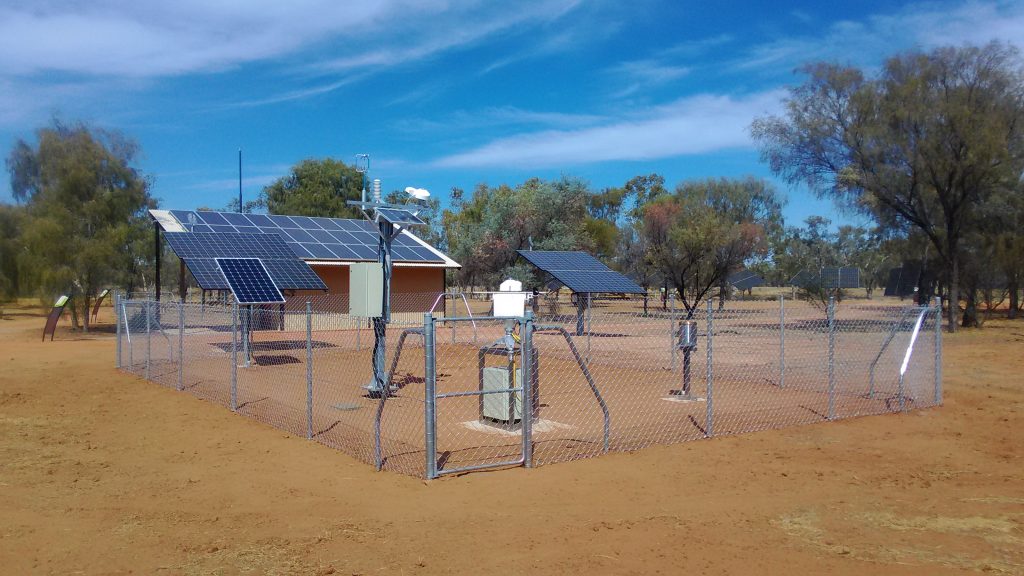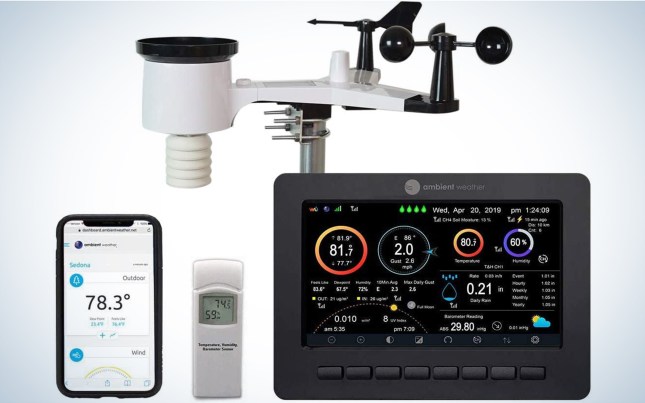Comparing the very best Weather Stations of 2024: What Sets Them Apart?
Comparing the very best Weather Stations of 2024: What Sets Them Apart?
Blog Article
Checking Out the Various Kinds Of Professional Weather Stations for Accurate Data Collection
When it comes to choosing the appropriate weather condition terminal for data collection, the market offers a variety of choices customized to various needs and settings. Let's discover the subtleties of these professional climate stations to understand their one-of-a-kind capabilities and identify the finest fit for particular information collection requirements.
Digital Weather Terminals
In the realm of atmospheric instrumentation, digital climate terminals stand apart as sophisticated tools for accurate data collection and evaluation. These innovative terminals are furnished with sensing units that capture a variety of weather specifications such as temperature, moisture, barometric stress, wind rate, and instructions. The information collected by digital climate stations is transmitted wirelessly to a central console or a computer system for real-time surveillance and evaluation.
One of the vital advantages of digital weather terminals is their ability to provide high-resolution information with precision and reliability. This level of precision is crucial for numerous applications, including agriculture, emergency situation, study, and air travel response. In addition, digital weather stations usually come with software application that permits customers to visualize the data in different styles like graphes and charts, facilitating simpler interpretation and decision-making.
Wireless Climate Terminals
Building on the capabilities of digital weather condition terminals, cordless climate terminals supply boosted ease and flexibility in information transmission and surveillance. By making use of cordless technology, these weather terminals remove the demand for difficult wired links, permitting for simple setup in different places. The wireless feature enables real-time data surveillance from remote locations, giving meteorologists and climate fanatics with instantaneous accessibility to essential details.
Wireless weather condition stations usually include sensing units that collect information on temperature, moisture, barometric pressure, wind rate, and direction. These sensing units wirelessly send the information to a main console or receiver, where it is processed and presented for analysis. Some advanced cordless weather stations can also connect to the net, enabling customers to access their weather condition information remotely by means of computer systems or mobile phones.

Prosumer Weather Stations
What differentiates Prosumer Climate Stations from traditional consumer-grade weather stations? Prosumer Weather condition Stations bridge the space in between professional-grade and consumer-grade equipment, offering more sophisticated functions and higher accuracy than normal home climate terminals. These terminals are made for climate fanatics, amateur meteorologists, and tiny businesses that require even more precise information than what customer versions can give.
Prosumer Climate Stations often consist of a bigger array of sensing units to gauge extra atmospheric specifications such as UV index, leaf wetness, sites and soil dampness. i thought about this They additionally often tend to have a greater degree of toughness and dependability, making them appropriate for long-term outdoor use in various ecological problems.


Industrial Climate Stations
Industrial Weather condition Stations, also understood as atmospheric monitoring systems, are specialized tools made for robust and exact weather condition information collection in industrial settings. These terminals are customized to meet the distinct needs of commercial operations where accurate weather condition details is essential for security, performance, and his response decision-making processes.
Industrial weather condition terminals are outfitted with innovative sensors that can determine a wide variety of atmospheric parameters such as temperature, humidity, wind speed and direction, barometric pressure, and rainfall (Weather Stations). These terminals are usually ruggedly built to endure rough ecological problems typically found in industrial atmospheres
One secret function of industrial weather condition stations is their ability to provide real-time data monitoring and evaluation. This permits commercial centers to expect weather-related dangers, enhance operations based upon climate problems, and make certain the safety and security of employees and devices. Furthermore, industrial weather terminals can be incorporated into existing industrial control systems for smooth information administration and automation.
Portable Weather Terminals
In comparison to stationary industrial climate terminals, portable weather terminals use versatility and wheelchair for on-the-go data collection in various ecological setups. These compact devices are created to be quickly transferred to various places, making them perfect for field study, emergency response situations, agriculture, building and construction websites, and outside events.
Mobile weather terminals commonly include sensors for gauging criteria such as temperature level, humidity, barometric stress, wind rate, and wind direction. Some advanced versions may also feature extra sensing units for keeping an eye on rainfall, solar radiation, and UV levels. Despite their small size, portable weather stations are capable of providing trustworthy and exact information similar to that of bigger, repaired stations.
One of the key benefits of portable weather condition terminals is their quick release and ease of setup. They can be functional within mins, permitting for rapid information collection and evaluation. Additionally, these stations can be configured to send real-time data wirelessly, allowing customers to monitor and examine environmental problems from another location. Overall, portable weather condition terminals are invaluable tools for experts needing mobile, exact, and prompt weather information in diverse settings.
Final Thought
In final thought, professional climate terminals come in various kinds such as digital, wireless, prosumer, commercial, and portable. By recognizing the distinctions between these kinds of weather condition terminals, individuals can make enlightened choices to ensure they obtain the most reputable and precise climate data for their functions.
Climate))))
Structure on the abilities of electronic climate stations, wireless climate terminals use improved convenience and adaptability in information transmission and surveillance. Some progressed wireless climate terminals can also link to the web, allowing users to access their weather data from another location through computers or smart devices.
Prosumer Weather condition Stations bridge the gap between consumer-grade and professional-grade tools, offering more sophisticated features and higher accuracy than regular home weather terminals. Weather Stations. Overall, portable weather condition stations are invaluable tools for specialists needing portable, precise, and timely weather condition info in diverse setups
By comprehending the distinctions in between these types of weather condition terminals, individuals can make informed choices to ensure they obtain the most exact and dependable weather data for their purposes.
Report this page